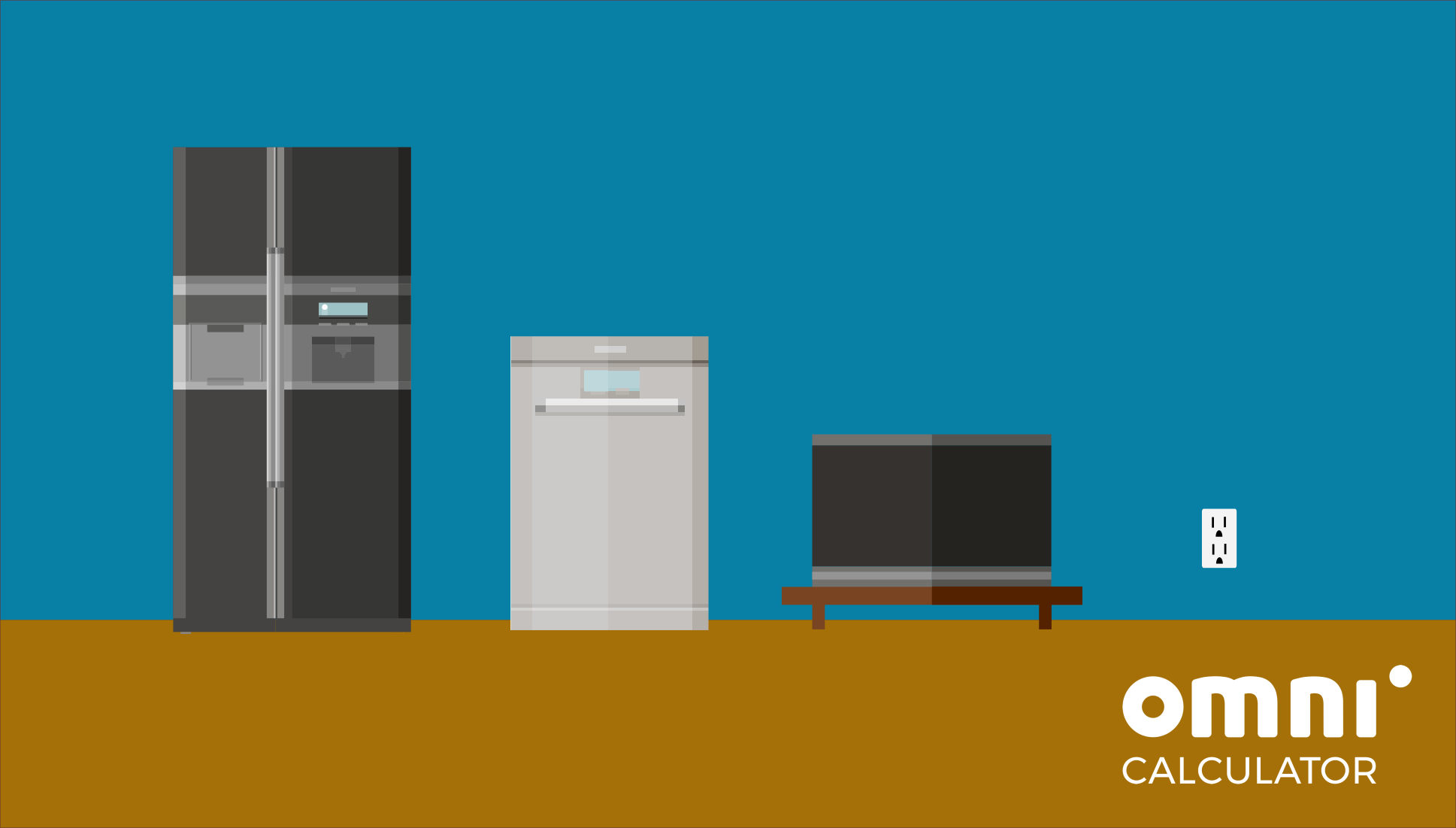Concepts addressed: Ohm’s law, electrical power, unit conversion
Grade level: 11th.
An easier version of Saving Money with electricity is also available.
Scenario:

My TV, fridge, and freezer are all right next to an electrical outlet, yet they all came with a 1.5m long cable to plug them in. Since they are all plugged in 24/7, I decided to buy a shorter (30cm) cable for each of them. All of the cables have the same quality (14 gauge), and I hope I can reduce the resistance of the wires and therefore save some energy (and money).
Assuming I have the three of them on all the time:
- How much energy will I save per day in each appliance? (in kWh)
- Calculate the energy savings of leaving the TV in standby at night (8h) instead of on. Which method of saving energy is better?
- How much money will I save by shortening the cables? And by leaving the TV on standby? Which is the better method?
WARNING: This scenario is meant to explore ideas without having to test them in reality. We strongly advise against modifying your house wiring system unless you’re a professional.
Data:
Wire diameter (14 gauge): 0.0641inch/ 1.63 mm
Resistivity of Copper: 0.0000000168 Ω * m
Household voltage: 120V (US) || 220V (EU)
Fridge power consumption: 250W
Freezer power consumption: 100W
TV consumption: 200W in use, 2.3W on stand-by
Useful calculators:
- Circumference calculator – https://www.omnicalculator.com/math/circumference
- Wire Resistance calculator – https://www.omnicalculator.com/physics/wire-resistance
- Ohm’s Law calculator – https://www.omnicalculator.com/physics/ohms-law
- Electricity Cost calculator – https://www.omnicalculator.com/everyday-life/electricity-cost
Question 1 hints:
Question 2 hints:
Question 3 hints:
Solutions:
| Appliance | Power saved (EU) | Power saved (US) |
|---|---|---|
| Fridge | 0.000003 kWh/day | 0.000010 kWh/day |
| Frezeer | 0.00000048 kWh/day | 0.0000016 kWh/day |
| TV | 0.0000019 kWh/day | 0.0000064 kWh/day |
- Shorter cables: You will save less than 1 cent (0.008 USD) on your yearly electricity bill, but you will pay much more for the new cables.
- TV on standby: You will save 69.32 USD on your yearly electricity bill and it’s free to implement.
Step-by-Step solutions :
The differences in resistance is R = 2.442 mΩ. The power savings are the power drawn multiplied by the difference in cable length. So we use the power each appliance draws to calculate the current flowing through each cable. Making use of the electrical power formula we can compute I as (P = IV => I = P/V), where the voltage used in the USA is 120 V. Now we use the Ohm’s Law calculator to obtain the power drawn by the cables, using I = P/V and the difference in resistance previously calculated. Doing this for each appliance and multiplying the result by 24 hrs (as they are on all the time) gives us the following values:
| Appliance | Power saved (EU) | Power saved (US) |
|---|---|---|
| Fridge | 0.000003 kWh/day | 0.000010 kWh/day |
| Frezeer | 0.00000048 kWh/day | 0.0000016 kWh/day |
| TV | 0.0000019 kWh/day | 0.0000064 kWh/day |
ΔP = 200 W – 2.3 W = 197.7 W.
Then we convert this difference to energy by multiplying it by the time it is running, or using our Electricity Cost calculator and using 8 hrs as the running time.
The result is that putting the TV on standby for 8 hrs/day will save you: 1.5816 kWh/day.
-
You simply need to look online for the cost of electricity in your region, or get the average value for your country. Once you have the cost, all you need to do is to multiply it by the electricity saved and you will obtain the money you have actually saved.
- Shorter cables: You will save less than 1 cent (0.008 USD) on your yearly electricity bill, but you will pay much more for the new cables.
- TV on standby: You will save 69.32 USD on your yearly electricity bill and it’s free to implement.
money_saved = power * time running * price_per_kWh
You don’t need to calculate all the values, we can just take the best-case scenario (Fridge in the USA). Substituting the values we get:
money_saved = 0.000010 kWh/day * 365 days/year * 0.12USD / kWh = 0.008 USD/year
Now, for the TV, we do the same:
money_saved = 1.5816 kWh/day * 365 days/year * 0.12USD / kWh = 69.32 USD/year
Bonus points if you search online for the price of short cables like the ones mentioned in the scenario.
Data calculated using US power consumption values and US's average price of electricity at 0.12 USD/kWh.
I like this one a lot, including the admonition to leave electrical work to trained folks. I just have not had time in a school year to include electric current in my physics class…perhaps next year. One thing I really like is the experience that this gives children about the amazing conductivity of copper.
Thank you so much for your kind words! I hope you can use it next year 😊